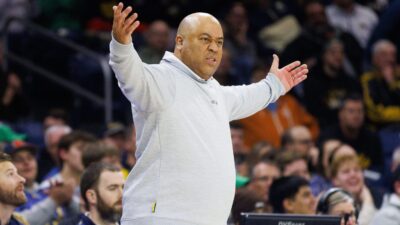Saturday’s matchup between the Arkansas Razorbacks and Texas A&M Aggies represents a stark contrast in the sport of college football.
Old school vs. new school.
The Razorbacks feature a more traditional power rushing attack behind a huge offensive line and big tight ends. They wear down defenses over the course of the game with their ground and pound style.
Texas A&M, on the other hand, spreads defenses out. The name of the game for the Aggies is speed – quick, up-tempo spread offense that’s running at a high gear all the time.
Time of possession comparison
- Texas A&M – Avg. 26:00 per game (last in SEC, 120th nationally)
- Arkansas – Avg. 32:06 per game (fourth in SEC, 28th nationally)
Points comparison
- Texas A&M – Avg. 55.3 points per game (first in SEC, second nationally)
- Arkansas – Avg. 48.8 points per game (second in SEC, third nationally)
As exciting as the Aggies’ offense can be, it’s Arkansas’ offense that’s more of an anomaly these days with college football full of all kinds of variations of the spread offense. Despite the differences in speed of offenses, both teams are clearly having great success at scoring points as the top two scoring offenses in the SEC.
However, both teams feel confident in their ability to defend on Saturday.
“It’s no secret what we’re going to see on Saturday,” Texas A&M defensive coordinator Mark Snyder said. “We’ve been working on [defending Arkansas’ run game] for quite a while. This won’t be the first offense we faced that likes to run the ball. They’re awfully good, there’s no doubt. We’ll have to be strong up front and have great eyes on the back end.”
On the Arkansas sidelines, defensive coordinator Robb Smith knows his team will face a steep challenge in defending Kenny Hill and the Texas A&M passing game, but he feels the Hogs’ prior games against other spread teams should help his defense this game.
“The Texas Tech game is going to be important for us because it is very similar offensively,” Smith said. “I think both sides are going to be looking at that game. When we’re out there we’ve got to stop them and play our brand of football. How many snaps we’ve got to play we’ll play. But there’s a certain style and certain way we want to play and if we are able to do that we’ll be successful.”
Ironically enough, Arkansas best defense against Texas A&M’s offense may just be their own offense. Using what Smith said, look back at Arkansas’ game against Texas Tech. Even with a questionable secondary, why were they so successful against the Red Raiders – an offense that virtually mirrors Texas A&M’s offense?
Because they didn’t let Texas Tech have the ball. In the second half of that game, the Razorbacks were up 28-21 at the start of the third quarter. The game ended with the Hogs winning 49-28. Arkansas’ biggest key to the jump in the second half was their time of possession.
Arkansas had the ball for 23:55 in that second half, leaving Texas Tech to just 6:05 with the ball. The lack of possessions for Texas Tech combined with Arkansas’ 10-plus play clock-eating drives forced the Red Raiders to rush. When an offense begins to rush, no matter how fast they like to run, it makes them vulnerable to mistakes. And when Texas Tech rushed to get points, quarterback Davis Webb threw an interception to seal the loss for the Red Raiders.
A similar outcome by Arkansas would be ideal for Bret Bielema and his staff. With how talented and efficient Texas A&M’s offense is, there’s not too realistic of a chance for the Hogs defense to contain Kenny Hill and company for an entire game. They’re going to score points. It’s inevitable.
However, if Arkansas controls time of possession like they’ve done in the past and put the pressure on Texas A&M to score points with limited possessions, perhaps the Razorbacks will discover that the best way to stop the Aggies’ hurry-up, spread offense is to speed them up.
Drew Laing will be providing analysis and insight on Florida, Georgia, Missouri and South Carolina.






